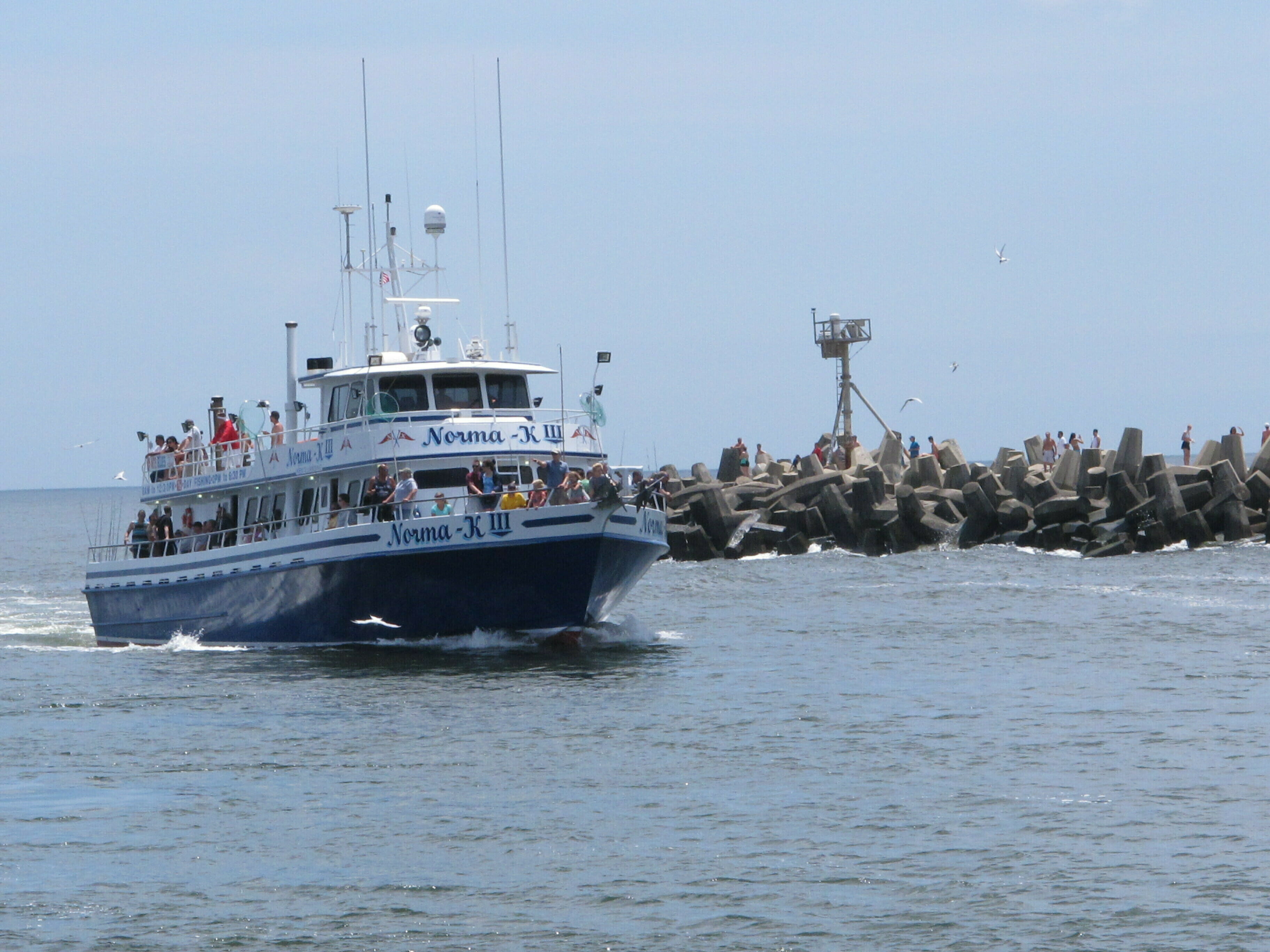
Study proposes gates to close inlets, curb back bay flooding
MANASQUAN, N.J. (AP) — Storm surge barriers to temporarily close off inlets and portions of bays during severe storms are among measures envisioned in a new study to protect New Jersey coastal areas from back bay flooding.
Such flooding caused major damage during Superstorm Sandy in 2012, even though more attention was paid to damage from oceanfront waves pounding on the beachfront.
By contrast, back bay flooding is gradual and insidious, creeping up on areas fronting on bays or places with tributaries that swell with flood water and inundate homes and businesses.
Fixing it will be expensive and difficult as sea levels continue to rise, yet governments and individual homeowners show little appetite for reining in construction on the very edges of the shoreline. Proposed fixes will cost billions of dollars — and no government funding is guaranteed for it, either.
“We’re living on a back bay, and we flood every month, and we’re just living with it,” said Chuck Appleby, whose Seaside Park home was damaged by bayside flooding during Sandy and who only recently finished elevating it. “They don’t have a solution yet.”
The New Jersey Department of Environmental Protection and the U.S. Army Corps of Engineers began the study in November 2016, realizing that this type of flooding is just as much of a danger to the coast as oceanfront flooding. Preliminary results were released late Thursday.
The most attention-grabbing proposal is for the installation of flood gates stretching across the mouths of inlets in several spots in New Jersey. The study found such barriers could work at the Manasquan, Barnegat, Absecon and Great Egg Harbor inlets. (It ruled them out for the Little Egg/Brigantine and Hereford inlets as too costly and posing potential adverse environmental impacts.)
Flood walls or levees could work in Cape May; West Cape May; Wildwood Island and West Wildwood Island; Stone Harbor and Avalon; Sea Isle City, Ocean City, Absecon; Brigantine; Long Beach Island and the area just north of Manasquan Inlet, according to the report.
Similar barriers have been proposed for waterways in New York and already exist along the Mississippi River and in Venice, Holland and England. But other places, including Boston, considered the idea but decided the cost outweighs the benefits.
Some environmental groups oppose them, fearing barriers would restrict the tidal flow and sediment transport, and impede the migration of fish including striped bass.
Jeff Tittel, director of the New Jersey Sierra Club, predicted that storm surges crashing into inlet gates will flow to either side of them, increasing erosion and flood damage to adjacent oceanfront areas.
“You put the gates up and the storm surge will go right through the dunes,” he said. “That water’s got to go somewhere.”
The report also calls for installing interior gates within a bay, either in conjunction with or instead of inlet gates.
It recommends elevating some buildings, which is already being done in many places. It also advocates relocating others out of harm’s way, a solution the state has had limited success with due to the high cost of acquiring valuable coastal land.
Natural solutions including so-called “living shorelines,” reefs, wetland restoration and submerged aquatic vegetation are also mentioned as possible solutions.
Authorities cautioned that they have only limited understanding of the potential environmental risks from many of the recommendations, and said further study is needed. But they did note that some of the solutions will change the appearance of coastal locations, including the inlet and interior bay flood gates that would be permanent.
A flood gate project in New Orleans near Lake Pontchartrain that was cited as an example of a possible project in New Jersey consists of large concrete and steel structures spanning the waterway, resembling a railroad bridge.
They hope to settle on a plan for New Jersey by 2020.
The proposals include some of what coastal protection advocates have been seeking for years. But these groups worry about an overreliance on hard structures like gates and sea walls, preferring more time and effort go to natural solutions and relocation of homes and businesses from flood zones.
“This is an early peek at the huge costs facing New Jersey if it tries to hold the current line of development everywhere,” said Tim Dillingham, executive director of the American Littoral Society. “It’s time to learn to live with the coast, not just on it. There will no doubt be more walls someday, in some places, but let’s hope we’re wise enough to not try and build walls and gates up and down the entire coast in a vain attempt to keep the ocean out.”
___
Follow Wayne Parry at http://twitter.com/WayneParryAC
The Western Journal has not reviewed this Associated Press story prior to publication. Therefore, it may contain editorial bias or may in some other way not meet our normal editorial standards. It is provided to our readers as a service from The Western Journal.
Truth and Accuracy
We are committed to truth and accuracy in all of our journalism. Read our editorial standards.
Advertise with The Western Journal and reach millions of highly engaged readers, while supporting our work. Advertise Today.












